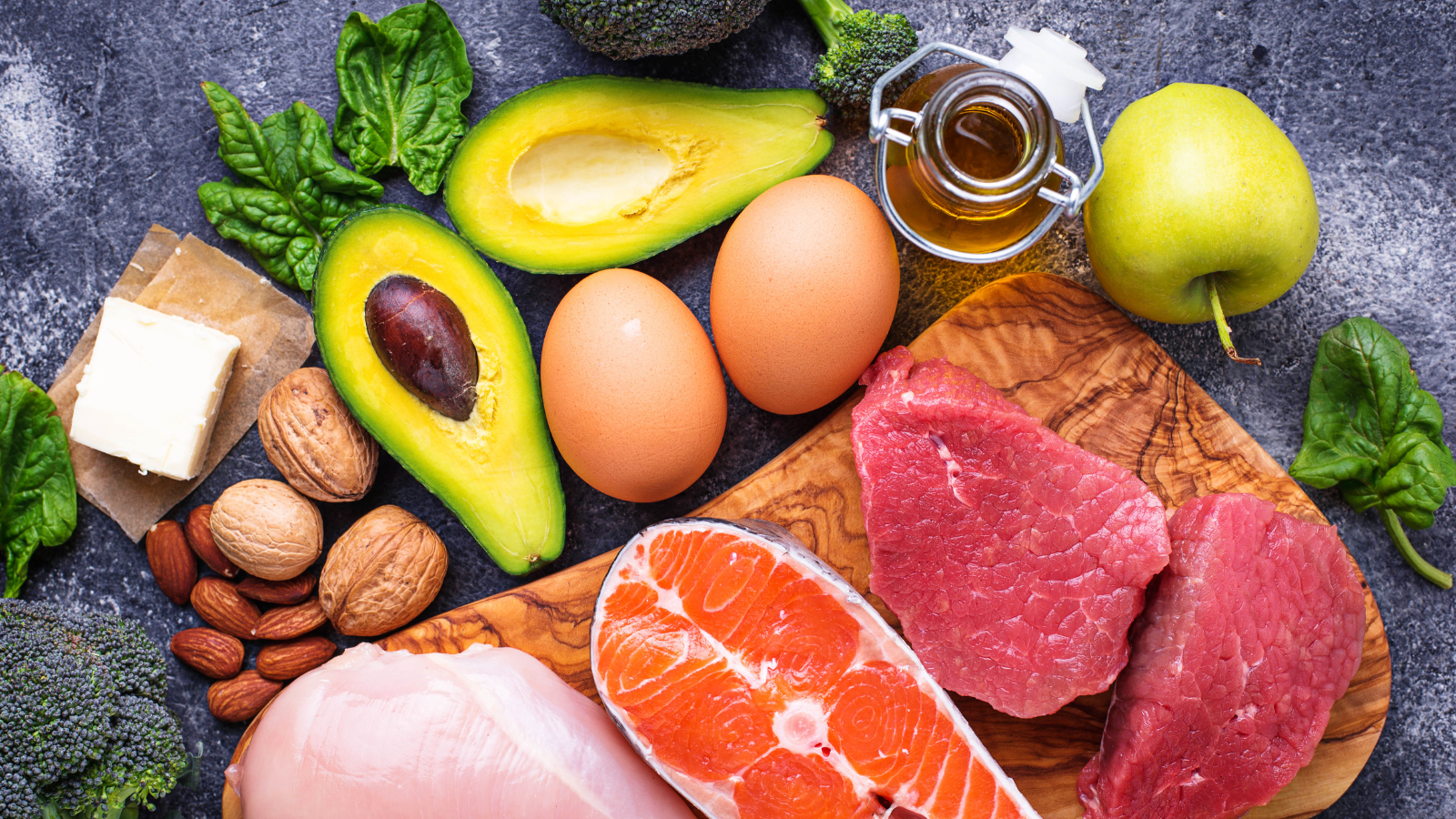How I Went Too Low-Carb on the GAPS Diet (Guest Post)

The following is a guest post by Kendahl Millecam, author of the blog, Our Nourishing Roots.
I launched my blog, Our Nourishing Roots, last year in the fall. I was in my 7th month of the GAPS diet at the time, a healing protocol that corrects leaky gut syndrome which is a link between mental health, food allergies, and even autism.

I was feeling awesome and I recommended the GAPS diet to everyone! It was the cure-all for every ailment! I had energy, I was clear-headed, I was happy.
But around month 8 on GAPS, things took a turn. I was doing GAPS low-carb without realizing it. I did not get enough veggies, and I had gotten tired of squash. I started to feel tired again, not sleeping and not feeling alert during the day.
I had also been boasting a 30 pound weight loss, and it started creeping back. I was also craving grains for the first time since starting the diet. I mistakenly thought this was a sign to keep plowing through GAPS, though in retrospect I realize it was my body saying “No, seriously, eat some grains!”
I tried adding in detox baths at night and fresh juices in the mornings and they helped, but only for about two weeks. I thought I was doing GAPS wrong. The answer was yes and no.
What happened? I asked myself that over and over, and came up with nothing. I didn’t cheat on any GAPS foods. I was drinking enough stock and taking my probiotics. I concluded that I was just having another round of die-off, which is when the digestive tracts lets the bad bacteria or “bad bugs” go. I was wrong. I was too low-carb and I was not aware of the symptoms!
I have found that many people have experienced the same thing. They go on GAPS, but if they aren’t careful they end up with low-carb symptoms after about 6 months.
Going Too Low Carb on GAPS
So was I doing GAPS wrong? Yes, it was too low carb. I think this is an indicator that we need to call attention to the tendency for people to slip into low carbing without realizing it on GAPS.
How did it happen? Over time. I did GAPS Intro diet perfectly. I detoxed and felt amazing for the first time in a long time. After about two months of GAPS, I started going lower and lower carb. Here’s the rub: I was feeling amazing.
The problem is that you don’t feel the effects of low carb for a few months. At first you feel like you have found the pinnacle of vitality and weight management. But after about 6 months on average, your adrenals give out and you feel worse. If you don’t believe me, check your temperature.
Low Carb/Grain-free is In Vogue
I didn’t get these permanent grain-free ideas from the GAPS books. I got these ideas from the paleo/primal diet followers. The paleo or primal diet is based on what Grok, our caveman ancestor, would eat. The argument goes: Grok didn’t have dairy or grains, so we shouldn’t either. That kind of reasoning crept into my psyche, mixing with what I knew about GAPS.
As I read Mark’s Daily Apple (a primal website) and basked in the popularity of real food in primal and paleo circles, I forgot that GAPS is a temporary diet. In addition, if you do GAPS as intended, it isn’t even necessarily low-carb.
I am so used to real food being against the mainstream that it was pretty nice to have some popularity being thrown the real food way. Going grain-free is in vogue right now, and I got caught up in the current and let the dogmatic aspect of grain-free dieting take root in me.
I got sucked into thinking we evolved to eat GAPS-foods forever. I told myself that grains and fresh dairy are hard to digest, and that’s why they aren’t ideal to eat. I thought of grains and dairy as if they would be problematic forever. I started to think of them as “treats” or even “the enemy”.
I also forgot how adaptable my body is: I truly believed I was so sick that I needed to do GAPS for the whole 2 years, no matter what. I let myself be a GAPS martyr, depriving myself of grains even after my body was giving me signs that I was ready to reintroduce them.
Don’t get me wrong, I felt amazing for the first 8 months of GAPS. But after that I ignored my body and did what I thought I “should”. That’s always a bad sign! I let the dogmatic approach to low-carbing take over my own bodily signals.
A Balance of Macronutrients
This Low Carb Honeymoon can also be called “The Catecholamine Honeymoon” as Matt Stone puts it. When you go too low carb, your adrenal hormones work overtime to keep your body in an energized state. That’s why you feel so great for the first few months of going low carb. But it’s also why many eventually crash.
After all, carbohydrates are a macronutrient. The same goes for fat and protein. That’s it! We cannot thrive on a diet that is too low in one of the three. In fact, the major lesson I got from going too low carb was that I should always look at a diet perspective and see if they are cutting out a macronutrient. Yes? It’s not sustainable!
The Wikipedia page shows that this macronutrient idea isn’t a secret. It plainly states:
There are three primary macronutrients defined as being the classes of chemical compounds humans consume in the largest quantities and which provide bulk energy. These are protein, fat, and carbohydrate.
Plus, a lot of us found these find real food blogs because we heard of or read Nourishing Traditions. Nourishing Traditions is very clearly anti-low-fat dieting.
I remember reading the introduction to Nourishing Traditions and thinking “What?! Fat is good for me?!”
Well, apparently I had to learn the same thing again, only this time with carbohydrates.
Carbs Are Not the Enemy
If you grew up in the same dietary climate I did, you heard fat is bad bad bad it makes you fat! Well, fat is another macronutrient. You can’t get away from it. You need it to function properly.
A good rule of thumb when looking at a new diet is to see if you are going to radically restrict one of the three macronutrients: fat, carbohydrate, or protein. If you are, be prepared for side effects sooner or later.
I’m just waiting for the next fad diet to come around that’s low-protein. We’ve already gotten through low-fat and now we’re in the middle of low-carb mania. You just wait and we’ll see that diet someday. You heard it here first!
GAPS is a Temporary Diet
So what was my fatal flaw? All together now! I forgot that GAPS is a temporary diet. There’s nothing wrong with GAPS! But there’s also nothing wrong with grains!
We tend to prefer black and white thinking, us humans. But reality is more often a bit more complicated.
GAPS can heal your gut. It may take a few months or it may take a few years. Most people on GAPS can reverse their food allergies, and many people will be able to happily eat grains for the rest of their lives without the guilt that so many other grain-free dogmatists insist upon.
Just remember to be open to new information, and always listen to yourself more than anyone else. You are the one who knows yourself best.
What Now?
In a word: RRARF. RRARF stands for Rehabilitative Rest and Aggressive Re-Feeding, coined by Matt Stone over at 180 Degree Health.
Matt has a simple way to gauge the health of your metabolism: temperature. After reading his blog, I found that I was really drawn to what he was writing. It just makes sense.
I bought his Diet Recovery ebook, and I am glad I did. Best $20 I ever spent, and it was the perfect timing. You see, by the time I was willing to admit that I wanted to eat grains, my body temperature had dropped into the 97s. This is a classic sign that my metabolism was suffering because of my diet and stress.
But here’s the most exciting part: Within about 2 weeks of following the RRARF plan in the Diet Recovery ebook, my temperatures popped right back into the 98.3-98.6 range waking, sometimes as high as 99.2 when I was ovulating.
When I talked to Matt he said that the temperatures are great indicator of hormonal health and balance. Since part of the reason I went on GAPS was to balance my hormones, I love seeing that my temperatures are back where they should be. I am glad to know that even though I did GAPS too low carb for several months I was able to recover my temperatures within only 2 weeks!
How I Got My Temperature Back Up
I transitioned back to grains slowly, starting with potatoes, buckwheat, quinoa, and then some sourdough bread. Now I am back into grains without any digestive problems, and my hands and feet are nice and toasty along with my temps all day long. There are more specific things to do to troubleshoot low temperatures, and they are all found in Matt’s Diet Recovery ebook
Of course, I eat properly prepared grains: soaked, sourdoughed, and sprouted. I have been saying for weeks that it is excellent timing that Ann Marie has started her Healthy Whole Grains class. Perfect timing for me!
A Note from CHEESESLAVE
I want to reiterate that many people do need to stay on GAPS longer than several months. Healing can take anywhere from a few months to a few years. It really depends on how damaged your gut is. GAPS is a very personal journey and everyone’s experience will be different. For me, it took me two years to heal my gut when I was in my 20s.
I wish I could say that my temps are as high as Kendhal’s yet… I’m averaging around 97.8 first thing in the morning. And it didn’t take me 2 weeks — it took a couple months. That said, I’ve been low carbing for a few YEARS (not several months) and I spent decades skipping meals and not eating well.
Maybe I should start eating ice cream for breakfast — it’s working for Sarah at Nourished and Nurtured: My Diet Update and Results from Diet Recovery Program
I will be writing a post soon about how you can increase your carb intake on GAPS in the near future. This is especially important for those of us who are pregnant, nursing, or recovering from being pregnant and nursing. These things really do a number on your hormones and metabolism!
In the meantime, check out Kendhal’s post on Our Nourishing Roots: Eight Ways to Get Enough Carbs on GAPS.
How About You?
Have you experienced any ill effects from going too low carb on the GAPS diet? Or just going low carb in general (not on GAPS)?
Share your thoughts and experiences in the comments section below.
